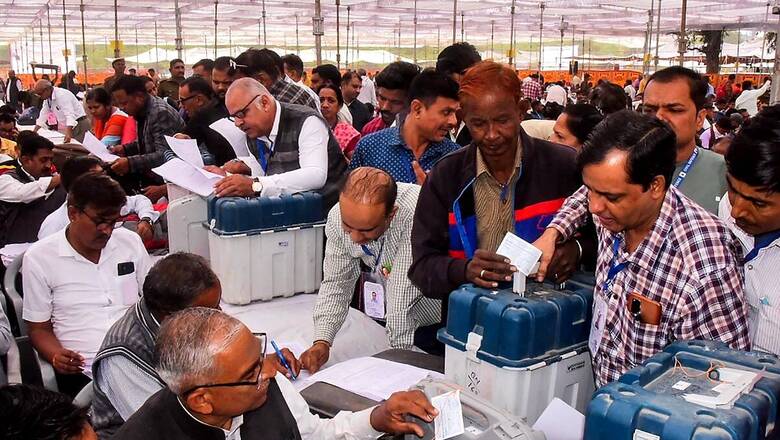
views
The BJP has been the fastest in announcing the first list of candidates for the upcoming Parliamentary elections. This is typical of its working style, where it works as a 24/7 electoral machine. In sharp contrast, the largest Opposition party, the Congress, is lumbering along on a much too delayed Nyaya Yatra, with the de facto party chief miles away from headquarters, and seat adjustments within the INDI alliance far from complete.
Many people were surprised at the number of new names in the BJP list, including the jettisoning of heavyweights in favour of fresh candidates. Some of this could, indeed, as some people allege, be tainted by subjectivity. The supreme duo in the party is apparently not well-disposed to those whose loyalties are suspect, or who are not subservient enough, or who could even remotely pose a challenge. But this factor is not unique to them. In almost every political party in India, the lack of inner-party democracy is transparent, and arbitrary decisions, purely on the subjective choice of the supremo, are par for the course, even more so in the rash of dynastic parties all over the country.
This being as it may, there is a new factor that has increasingly become a very strong element in elections: data. Gone are the days when the primary form of electioneering was posters and rallies. Today, while these still have their role, what decides their content, their location, and even their timing, is guided by finely honed data. This data decides what the messaging should be, where rallies should be organised for maximum impact, and what their chronological sequencing should be.
The 2014 Parliamentary elections, in which Narendra Modi emphatically triumphed, saw the first widespread use of data in both the planning of an election campaign and the selection of candidates. In the last ten years, this data-driven process has become far more sophisticated, complex and accurate. Based on scientific surveys, cross-checked against multiple factors, political parties can check the on-ground, realistic popularity of candidates, irrespective of what they claim, what ‘status’ they enjoy, and how many times they may have won before. This assessment is combined with changing demographics, caste considerations, local issues, grassroots party organisation, strength of possible opposing candidates, and new faces within the party that may have appeared, to create an algorithm that can zero in, if done competently, on who is the best choice for a particular constituency.
However popular some political leaders were when they first won a seat, and often won them again, anti-incumbency against the same face can become a critical factor. Often, candidates after they win, rest on their laurels, fail to fulfil their promises to the voters, neglect the constituency, or are widely perceived to be corrupt. In the past, their earlier reputation as winning candidates was taken at face value. No more.
The mood of the public is dynamic, and can never be taken for granted. If a charismatic leader from the opposing side has diligently worked in a constituency, has proven his or her sincerity in addressing the needs of the people, and is physically available on the ground, when by contrast the elected incumbent, although at one time popular, is missing, the voting pattern can change dramatically. This is precisely what the role of data plays in assessing the winnability of a candidate, and the need to retain or replace him or her.
Data also determines messaging for an election. What are the issues a party should focus on, both generically and at the micro level. A generic message may appear to have large popular support, but it needs to be buttressed in each constituency by due emphasis on local issues which affect people of that particular area. This too can now be accessed by a competent database and individualised briefs given to candidates. For instance, in Bihar, a survey showed that the biggest problem for most rural citizens is that of drainage and the absence of naalis to drain water out, especially after the monsoons. In UP, to give another example, one of the biggest problems farmers have to deal with is damage to crops by bulls, who cannot be culled and are left to fend for themselves.
The short point is that the nature of election planning has changed. A new symbiotic relationship has emerged combining field data and number crunching in war rooms where the ubiquitous weapon is a computer. It is for this reason that political parties, who have done their homework, can announce candidates well in time to give them a first-mover advantage. In this process, many candidates are replaced, and new faces are announced. Winnability is the key criterion.
In the 2019 West Bengal Assembly elections, Prashant Kishor, on the strength of precisely this form of data, dropped dozens of sitting candidates. Many of them then joined the BJP, but their unpopularity became a liability for the BJP. The BJP is by and large, following the same script, and that is why you see so many apparently established faces in the party not figuring in the party’s list of candidates.
The author is a former diplomat, an author and a politician. Views expressed in the above piece are personal and solely that of the author. They do not necessarily reflect News18’s views.



















Comments
0 comment